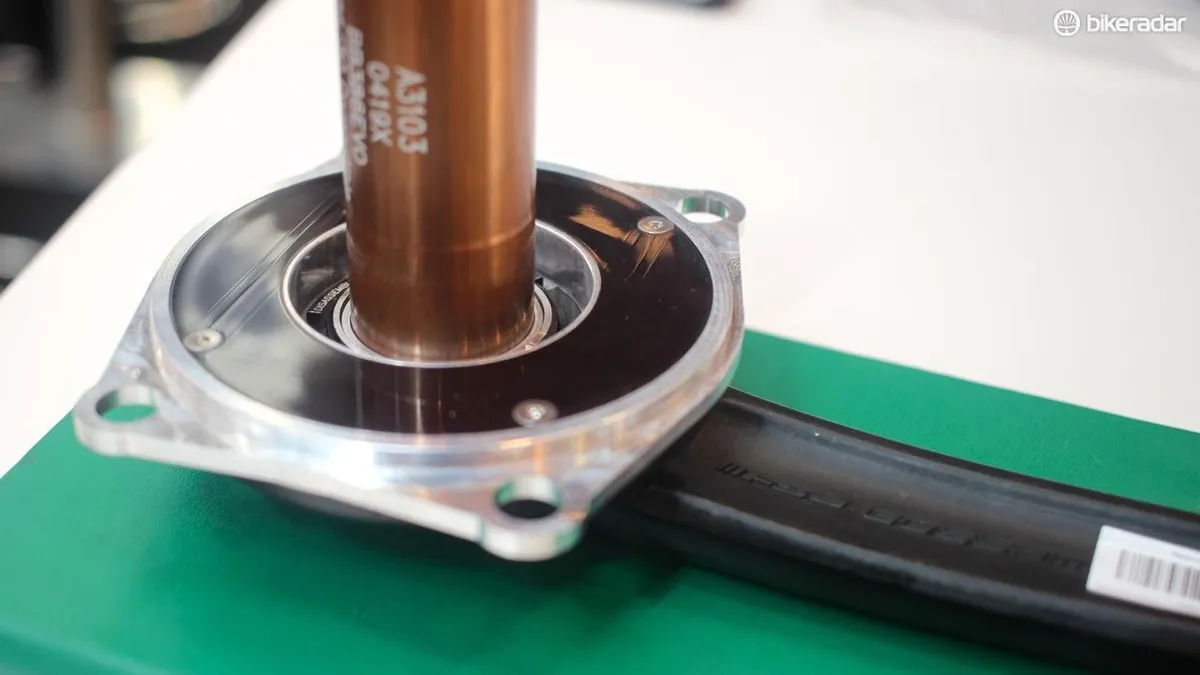We've been shown the new, very affordable power meters being promised by Danish start-up Zwatt at the Eurobike show currently taking place in Friedrichshafen, southern Germany. The interesting thing to note? The maker plans to offer it for $200 up-front, then asks for a $5 monthly subscription charge for two years. At the end of the two year period, the subscription fee drops to zero.
The project already smashed its Kickstarter goal earlier this year, based on the promise of cheap power meters that only require you to commit to logging at least 30mins of recorded riding time per month in return. The maker want you to log this riding time in its app, which will allow it to improve the product and get more data on how to accurately measure signal and filter out noise caused by things like vibrations.
The man behind the project, Rolf Ostergaard, told us that there are three models planned – crank arm-based, spindle-based and spider-based – and hopes to get out the first units this December. That will be 25 units of the spider-based model and 50 units of the crank arm-based model. Then, based on the data these units generate and the user feedback, he hopes to start producing an updated version of the power meters that are closer to ready for full production.
Metrics covered include power, cadence, torque effectiveness and pedal smoothness, all transmitted simultaneously via Bluetooth Smart and ANT+ to any compatible device.
While this is the first time we've seen power meters crowdsourcing their development data from the public, it fits nicely into a general trend of power meters getting more and more affordable, particularly models that fit strain gauges into the crank arm, like Stages.
Zwatt's crank arm power meter

These are being made by French firm Stronglight, from machined alloy, and are initially Shimano-compatible only. SRAM and Campagnolo versions may follow once in full production.

This is a prototype model, which uses 3D-printed plastic to house the strain gauge, and the makers told us that finished versions being shipped to customers will look much cleaner. It's also waterproof to 1 metre, they say.

It features an inbuilt lithium-ion rechargeable battery that lasts 200-400 hours, which is charged via a clip-on magnetic charger that attaches to the two metal points you can see in the photo above, and uses a micro-USB connection.
Ostergaard says that he’s been working hard with testers to understand power spikes caused by vibrations. "These spikes are one type of artefact that makes power meters less valuable for mountain bike and cyclocross. By managing this, riders will have a much better user experience and this is essential to increase the number of riders using power meters beyond the first movers."
While Zwatt wants to get lots more real-world data from usage of these crank arm-based power meters before they're ready for market, Ostergaard told us that he expects the end result to be very similar that of competitors.
Zwatt's spider-based power meter

There will be a smaller batch of 25 spider-based power meters going out to Kickstarter backers this December, aimed primarily at mountain bikers. Ostergaard says that this model runs on identical technology to the crank arm model above, but is aimed more at mountain bikers.

Again, there is a rechargeable lithium-ion battery included, and it charges via a clip-on magnetic charger that runs from a micro-USB connection. Run time for this unit was not given. The model above was fitted to FSA cranks.
If you want to join Team Zwatt, head to its website. We’ll be getting one in to try as soon as we can.

